Heritage on Wheels: Kolkata’s Rath Yatra in Bonedi Baris
Hey readers! I am back with another blog today and sending you all warm wishes for RathYatra. Since childhood, pulling the chariot (Rath Tana) has always been a part of the celebration. Living in West Bengal, every year we decorate the Rath at our home, and children usually gather in the neighborhood with their individual Raths to celebrate Lord Jagannath’s day. Besides pulling the chariot, we also celebrate the day by savoring Pappor and Jalebi, as well as watching the grand celebrations in Odisha. So today, I thought of sharing with you all how Bengal celebrates Rath Yatra.
Rath Yatra in Kolkata this year is set to be a subdued affair, with most organizations and traditional families choosing to keep the celebrations low-key. While Rath Yatra is famously associated with the grand festivities in Puri, it has been a significant festival in Bengal since the 14th century, when Dhrubananda Brahmachari introduced it at Mahesh. Over the centuries, many zamindar families incorporated it into their annual celebrations, each with their own unique traditions. This year, we explore how the bonedi baris (traditional aristocratic houses) of Kolkata are continuing their legacies.
Choto Rashbari, Tollygunge
Choto Rashbari, located at 93 Tollygunge Road, has been celebrating Rath Yatra for over a century, with Gopalji as the principal deity. When the temple was inaugurated in the mid-19th century, it featured a large chariot around 30-40 feet tall. The construction of the Sealdah-Budge Budge railway line over Adi Ganga necessitated a reduction in the chariot's height, leading to the creation of a new wooden chariot. The current chariot resembles a nabaratna (nine-spired) temple, adorned with rare Kalighat paintings on cloth.
The Rath Yatra here is distinctive. In the morning, a special puja is held, after which Gopalji is placed on a silver throne inside the chariot. Hymns are chanted, and invited guests and locals pull the chariot three times outside the temple compound in a ritual known as Gopaler taan. In the evening, the chariot is pulled again, this time with Sreedhar (Narayan sila) placed inside. Since 2018, after a decade-long hiatus, Rath Yatra at Choto Rashbari has been celebrated anew.
Previously, during the zamindari era, the celebration was even more elaborate, with processions featuring flag bearers, silver umbrellas, kirtaniyas, shehnai players, and dhakis. The tradition of throwing batasha (a sweet) during the journey continues. In the late evening, a custom called dala bhog involves offering fruits, nuts, sweet curd, and other items to the deity before distributing them to the people. Gopalji and Narayan sila are then taken to Mashir Ghar, a room beside the temple, where they are worshipped until the chariot's return journey eight days later.
Sabarna Roy Chowdhury Bari, Barisha
The Sabarna Roy Chowdhury family started celebrating Rath Yatra in 1719, making it one of the oldest in Kolkata. The original chariot had the family deity presiding in it. In 1911, Lal Kumar Roy Chowdhury built a smaller chariot and a temple dedicated to the Holy Trinity at Sakher Bazar. The idols are still carried on the chariot each year. Despite a brief hiatus in the late 70s, the tradition resumed with a replica of the Puri chariot. Normally, the chariots are decorated at the Roy Chowdhury house and pulled to a family house in Behala, where the deities stay for seven days before returning. This year, due to the lack of permissions, the celebrations will be minimal with just a general puja and a small gathering of close relatives.
Marble Palace
Established over 200 years ago by Raja Rajendra Mullick Bahadur, the Rath Yatra at Marble Palace is known for its strict prohibition of photography and its inclusive celebrations. The bhog offered to Lord Jagannath is the same as in Puri. There is a fair on the day of Rath Yatra and Ulto Rath (the return journey). However, this year, there will be no fair or bhog distribution. Instead, a basic puja will be performed.
Sovabazar Rajbari (Chhoto Torof)
At Sovabazar Rajbari, the 200-year-old Rath Yatra is a close-knit family affair. The family deity, Narayan, is carried across the courtyard on a traditional chariot. Family members are allowed to touch the deity and seek blessings only on this day. On Ulto Rath, the family celebrates Kathamo Pujo, marking the beginning of Durga Puja preparations. Unlike other households, they do not follow the Mashir Bari ritual.
Laha Bari
Laha Bari, with a history of over 150 years, celebrates Rath Yatra by placing the family deity, Raghunath Jiu, on a traditional chariot. The family prepares everything from scratch, including bhog and decorations. The celebration is synonymous with family gatherings, with the traditional chariot decorated with fresh flowers and lights.
Dorjipara Mitra Bari
Dorjipara Mitra Bari's Rath Yatra, over 218 years old, features their home deity, Raj Rajeswar, placed on a chariot and pulled across the courtyard or temple roof. Twenty-eight red oleanders are offered to the deity, and traditionally, a pair of hilsa fish is welcomed into the household, marking a period when the family can consume hilsa. On Ulto Rath, the family helps Jagannath trace his way back across the courtyard to the temple.
Food Traditions Remain Unchanged
Despite the scaled-back celebrations, the traditional Rath Yatra bhog menu remains unchanged. The Mullick family offers a menu that includes nine types of khichuri, five vegetable curries, luchi, anna bhog, and homemade sweets, a tradition over 200 years old. Similarly, the Laha family will prepare their usual menu of luchi, kochuri, alur dum, five types of vegetable fries, fruits, and sweets, ensuring safety by limiting the gathering to family members only.
Despite the scaled-back celebrations this year, the spirit of Rath Yatra in Kolkata remains alive through the devotion and traditions of its bonedi baris. These families, with their rich histories and unique customs, continue to honor the festival with reverence and dedication. Whether through the intricate rituals at Choto Rashbari, the historic observances at Sabarna Roy Chowdhury Bari, the inclusive yet solemn festivities at Marble Palace, or the close-knit family gatherings at Sovabazar Rajbari, Laha Bari, and Dorjipara Mitra Bari, Rath Yatra in Kolkata exemplifies the enduring cultural heritage of the city. Even in a quieter form, the essence of Rath Yatra—a celebration of devotion, community, and tradition—persists, reflecting the timeless connection between the people of Kolkata and their beloved festival.




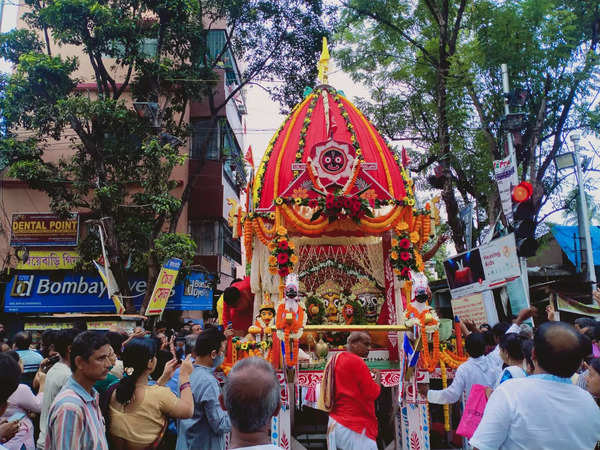
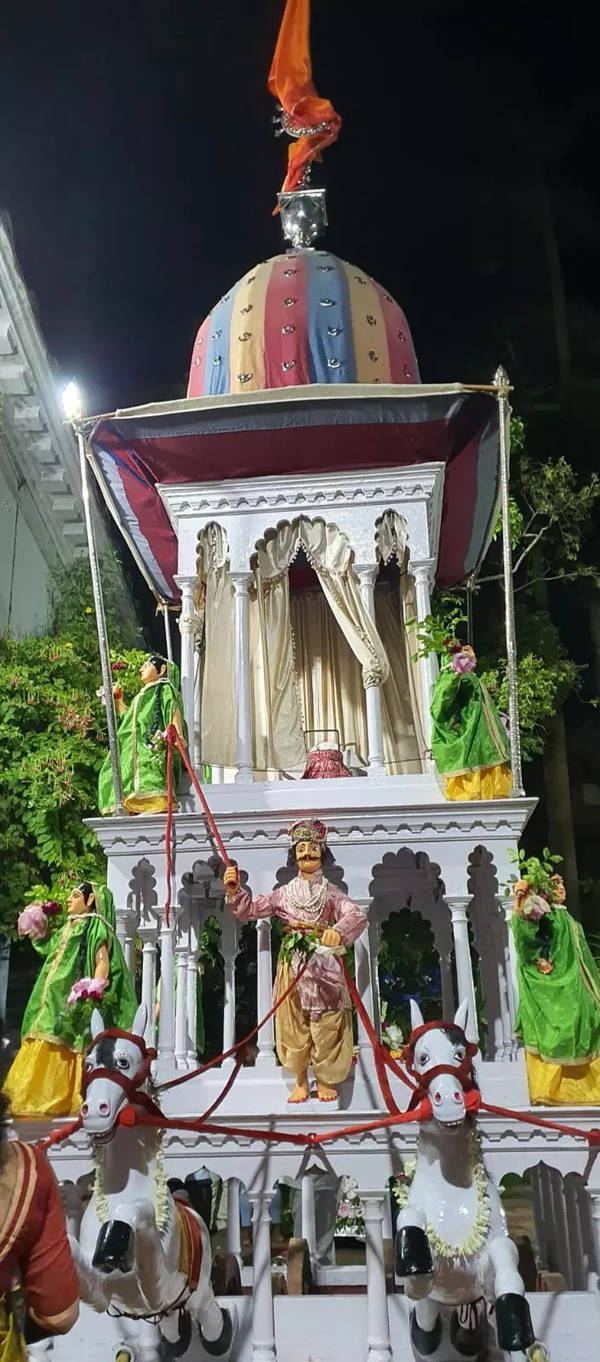
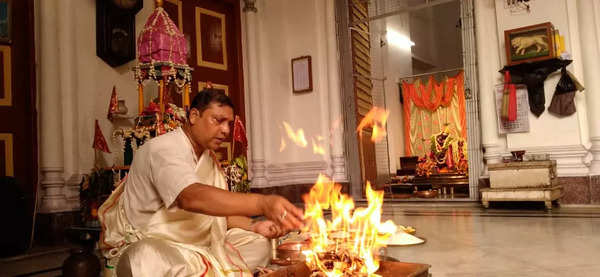
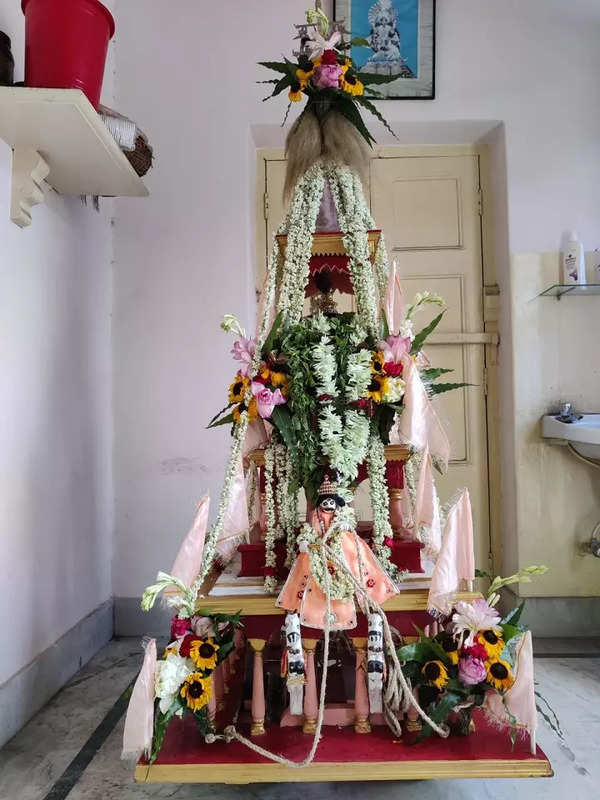
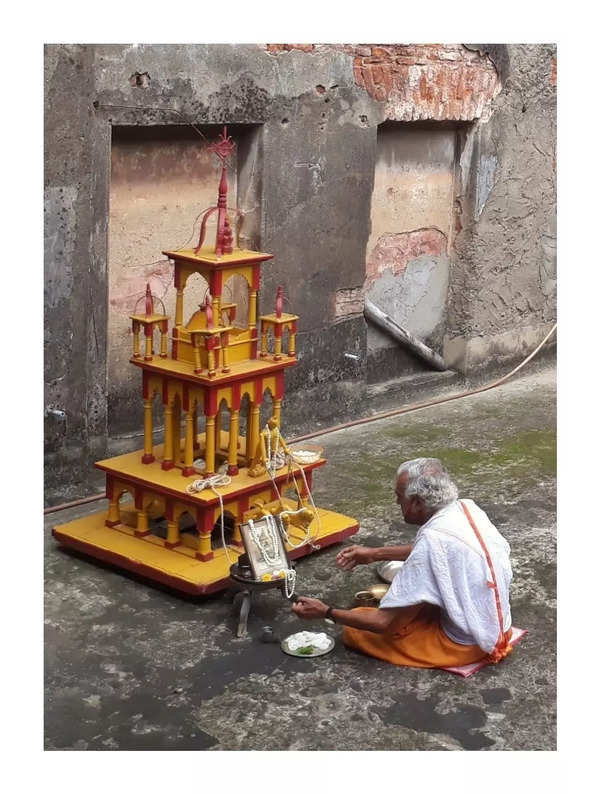

.jpg)
Comments
Post a Comment